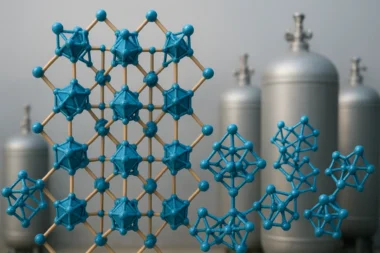Dynamic Heat Transfer on Surfaces: Unravelling Fundamental Principles and Advancements for Sustainable Solutions in Energy and Materials Engineering
In the realm of energy and materials engineering, the study of dynamic heat transfer on surfaces stands as a pivotal area, guiding innovations towards sustainable solutions. The efficient management of heat transfer plays a crucial role in enhancing the performance and longevity of various systems, ranging from electronic devices to renewable energy technologies. This article delves into the fundamental principles of dynamic heat transfer on surfaces and explores recent advancements that hold promise for achieving sustainability in energy and materials engineering.
Understanding Dynamic Heat Transfer
Heat transfer is a complex process involving the exchange of thermal energy between systems. On surfaces, this phenomenon takes on dynamic characteristics influenced by factors such as material properties, surface roughness, and environmental conditions. The three main modes of heat transfer—conduction, convection, and radiation—interact dynamically, creating challenges and opportunities for engineers seeking to optimize thermal performance.
Conduction:
Conduction, the transfer of heat through a material without any movement of the material itself, is a fundamental aspect of dynamic heat transfer. The understanding of thermal conductivity and how it varies with temperature, material composition, and crystal structure is crucial. Recent advancements in nanomaterials have opened new avenues for enhancing thermal conductivity, paving the way for more efficient heat conduction on surfaces.
Convection:
Convection involves the transfer of heat through the movement of fluids, either liquids or gases. Optimizing convective heat transfer on surfaces requires a comprehensive understanding of fluid dynamics, boundary layer effects, and surface roughness. Advances in computational fluid dynamics (CFD) and experimental techniques have allowed engineers to model and manipulate convective heat transfer for improved efficiency in heat exchangers and cooling systems.
Radiation:
Radiation is the transfer of heat through electromagnetic waves. Surface properties such as emissivity, absorptivity, and reflectivity play a crucial role in radiative heat transfer. Innovations in coatings and materials engineering have led to surfaces with enhanced radiative properties, enabling better control of heat transfer in applications like solar collectors and radiative cooling systems.
Advancements in Dynamic Heat Transfer
Nanostructured Materials:
The integration of nanostructured materials has revolutionized the field of dynamic heat transfer. Nanostructures, such as nanotubes and nanowires, exhibit exceptional thermal conductivity, offering a pathway to enhance heat conduction on surfaces. Researchers are exploring the incorporation of these materials into composites and coatings to improve the thermal performance of various systems, from microelectronics to heat exchangers.
Smart Surfaces and Coatings:
The development of smart surfaces and coatings that can actively modulate their thermal properties in response to changing conditions is a burgeoning area of research. These materials, often inspired by nature, can adapt to environmental factors, optimizing heat transfer for increased efficiency. Examples include surfaces that can switch between high and low emissivity states for better control of radiative heat transfer.
Advanced Computational Modeling:
Computational tools have become indispensable for understanding and optimizing dynamic heat transfer on surfaces. Advanced simulations, such as lattice Boltzmann methods and molecular dynamics simulations, allow researchers to explore heat transfer at the molecular level. These simulations provide insights into the behavior of materials under different conditions, guiding the design of surfaces with tailored thermal properties.
Phase Change Materials (PCMs):
Integration of phase change materials into surfaces enhances their heat transfer capabilities. PCMs absorb and release latent heat during phase transitions, providing an effective means of storing and managing thermal energy. This technology finds applications in passive cooling systems and temperature regulation in buildings.
Graphene-Based Materials:
Graphene, a single layer of carbon atoms arranged in a hexagonal lattice, exhibits exceptional thermal conductivity. Incorporating graphene-based materials into coatings and composites enhances the overall heat conduction on surfaces. Researchers are exploring the use of graphene in various applications, including electronics, aerospace, and energy storage.
Thermoelectric Materials:
Thermoelectric materials have the unique ability to convert heat into electricity through the Seebeck effect. Ongoing research focuses on developing high-performance thermoelectric materials for efficient energy harvesting. Integrating these materials into surfaces can lead to the creation of self-powering devices and energy-efficient waste heat recovery systems.
Microfluidic Heat Transfer Systems:
Microfluidic systems, employing tiny channels for fluid flow, enable precise control of heat transfer. These systems find applications in cooling electronic components, medical devices, and lab-on-a-chip technologies. The miniaturization of heat transfer components allows for improved thermal management in confined spaces.
Artificial Intelligence (AI) in Thermal Design:
AI algorithms are increasingly being used to optimize thermal designs. Machine learning algorithms analyze complex datasets to predict and control heat transfer behavior. This enables the creation of adaptive systems that can dynamically adjust thermal properties based on real-time conditions, maximizing efficiency and minimizing energy consumption.
Topological Insulators:
Topological insulators are materials that conduct electricity on their surfaces but act as insulators in their interior. These materials show promise in thermoelectric applications, where the surface conduction can be harnessed for efficient heat-to-electricity conversion. This opens up new possibilities for sustainable energy generation.
3D Printing for Enhanced Surface Structures:
Additive manufacturing, or 3D printing, allows for the creation of intricate and customized surface structures that optimize heat transfer. Complex geometries, such as fins and channels, can be precisely designed and fabricated, improving the overall efficiency of heat exchangers and cooling systems.
Bio-Inspired Thermal Management:
Drawing inspiration from nature, researchers are exploring bio-inspired approaches to thermal management. Mimicking structures found in nature, such as the microstructures on butterfly wings or the cooling mechanisms in animals, can lead to the development of surfaces with improved heat transfer properties and self-regulating capabilities.
Carbon Nanotube Arrays:
Arrays of vertically aligned carbon nanotubes (CNTs) on surfaces provide an efficient pathway for heat dissipation. These structures offer a high aspect ratio, enabling enhanced thermal conductivity. CNT arrays find applications in electronics cooling, LED lighting, and other high-heat-flux systems.
Flexible and Stretchable Thermal Interfaces:
Advancements in flexible and stretchable materials enable the development of thermal interfaces that can conform to irregular surfaces. This is particularly valuable in wearable electronics, medical devices, and flexible electronic systems where traditional rigid interfaces are impractical.
These advancements collectively contribute to the evolving landscape of dynamic heat transfer, fostering innovations that have the potential to address current and future challenges in energy and materials engineering.
Applications and Implications
The unraveling of fundamental principles and the incorporation of cutting-edge advancements in dynamic heat transfer have far-reaching implications for diverse applications.
Electronics Cooling:
Efficient heat dissipation is crucial for the performance and reliability of electronic devices. Advances in dynamic heat transfer enable the development of innovative cooling solutions, such as thermal interface materials and heat sinks, to address the challenges posed by increasing power densities in electronic components.
Renewable Energy Technologies:
In the realm of renewable energy, dynamic heat transfer plays a pivotal role in the efficiency of solar thermal systems and geothermal applications. Improved heat transfer surfaces contribute to enhanced energy conversion rates and the overall sustainability of these technologies.
Thermal Management in Transportation:
The automotive and aerospace industries benefit from advancements in dynamic heat transfer for thermal management. Lightweight materials with enhanced thermal conductivity contribute to improved fuel efficiency and the development of next-generation propulsion systems.
Dynamic heat transfer on surfaces is a multifaceted field that lies at the intersection of energy and materials engineering. By unraveling fundamental principles and leveraging recent advancements, engineers can pave the way for sustainable solutions that enhance the efficiency, reliability, and environmental impact of various technologies. The ongoing exploration of nanostructured materials, smart surfaces, and advanced computational modeling holds the promise of transformative breakthroughs, shaping the future landscape of dynamic heat transfer in the pursuit of a more sustainable and energy-efficient world.



